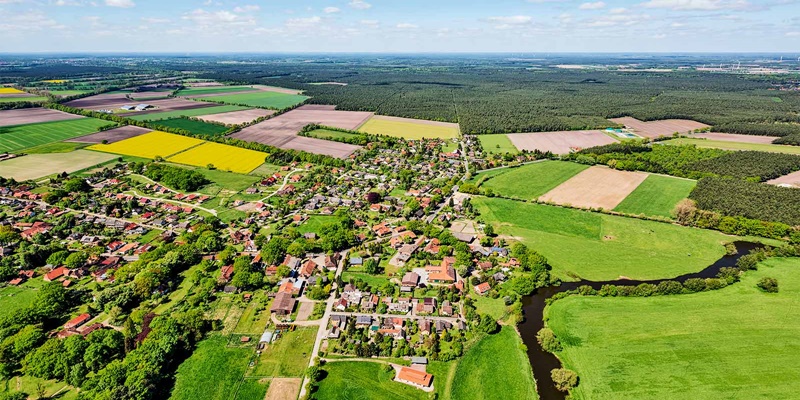Maximising Land Use to Better Support Industry and Society

Ongoing government enforced blackouts and inflationary pressures are contributing to an uncertain and highly volatile environment for the South African agricultural sector. But even in the darkest of times, there are opportunities for innovation and growth especially when it comes to farming of a different kind – that of green energy.
The country is blessed with many legacy farms that have an abundance of land. Imagine if only a third of that land is used for solar farms and other green power generation solutions. The potential to put energy back into the grid while supporting local communities can no longer be ignored. Of course, these green energy farms must be built in the areas where they can make the greatest impact.
Independent Power Producers (IPPs) can work closely with farmers and landowners to create an enabling ecosystem where the land can be used to its maximum benefit to support industry and society.
To put this into context; the broader Northern Cape region already presents a keen business case as the hot, dry climate and vast expanse of grazing farmland are great for solar farming. However, going the solar or green energy route might not make sense for every farmer. A sustainable business case must consider the local and long-term context of each farm and potential energy project, including potential landscape and weather changes or impacts to the soil that over time could also influence the arability of the land and/or natural occurring vegetation for livestock grazing. The business case should also consider any potential challenges linked to accessibility and maintenance of panels in those remote areas.
Of course, this is not to say that the Northern Cape is the only region in the country – or on the continent for that matter - that presents a favourable climate and to create a dual use environment. Another such example that is getting increased attention is agrivoltaic farming. This involves growing vegetation underneath solar panels. Studies have shown that some crops thrive under these conditions. In fact, solar panels can be placed to provide the vegetation below with just the right amount of sunlight, and the rest can be used for electricity. Depending on the climate and soils of an area, the dual land use combination can range from solar panels and extensive grazing land to solar panels and intensive cropping. Farmers and landowners can even add bee farming to this mix.
For farmers who need less grazing land, they can potentially advertise the availability of a small portion of their land for a 99-year lease to be used by third-parties like IPPs to build solar or wind farms on. Not only will the farmers benefit from being able to tap into these green energy sources, but they can also earn additional revenue from them.
Balancing opportunities with solutions
The potential of these direct private sector engagements to optimise land use for green energy are simply too good to pass up on. However, they must be partnership-led and driven. It is about all stakeholders working together – and for the betterment of all.
For example, the land can be used to build energy farms as well as to grow food for people. Farmers can therefore rest assured that arable land will not be ‘wasted’ on green energy but will be used to its maximum benefit.
Reforming the land for green energy and food use help ensure it is used optimally to benefit society. People are starving, facing food shortages. Farmers must deal with agricultural carbon taxes and are under pressure when it comes to water shortages. Combining green energy with farming through an active engagement process as farmers, IPPs, and other stakeholders work to explore opportunities for inclusive and beneficial growth can provide all role players with significant potential gains.
For their part, IPP partners must also take the time to understand the local context in which the farm operates. A traditional corporate approach will not work. But a human-driven one will make all the difference. IPPs must therefore be aware of local conditions to put in place the right kind of green energy solutions. This can only be done with a firm agreement with the farmer in place that provides details on the incentives the farmer will receive for having green energy on their land.
All about the options
It comes down to offering more options to more people. Instead of purely focusing on energy generation, the spotlight turns to the circular economy. Solar projects have such a long lifespan to contribute to the grid, create jobs, and even facilitate crop growth for the community.
Farmers can diversify their land with green energy and not be solely reliant on agriculture for income. This becomes especially important if the future generation is not interested in carrying on the farming legacy. It is now less about land ownership as building wealth through dividends thanks to green energy. If anything, ownership must be approached differently in this new world. Building legacy on top of the land instead of ownership in its purest sense of definition can help ensure generational wealth is created – and sustained.
By Karen King,
Principal Associate, WSP in Africa.
